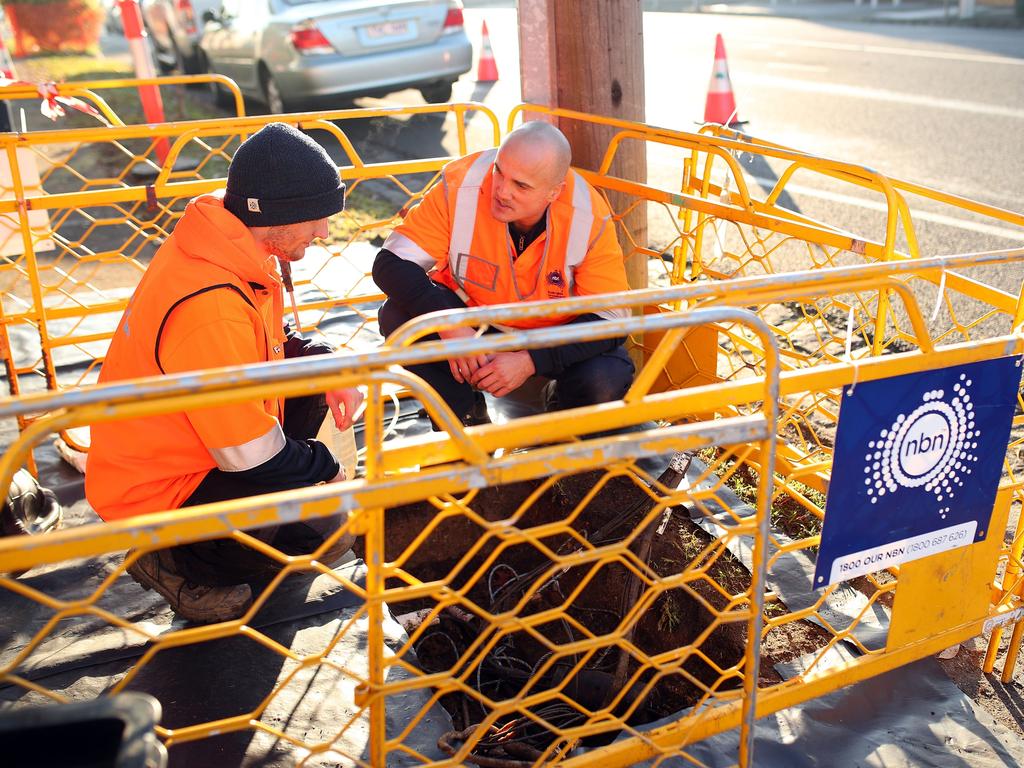Coronavirus: How to troubleshoot your internet speed at home
You’re locked down at home and the internet speed is appalling. Here’s what to do.

It’s a nightmare. Everyone’s locked down at home fighting coronavirus and using the internet.
You’re doing important company work needed urgently, your 16-year-old is studying online, and your 11-year-old is immersed in 4K online gaming. Another child is binge-watching Netflix, and someone’s on a telehealth consultation. The speed is terrible. It may be terrible when you’re home alone working online.
Internet traffic is up enormously. NBN’s latest report says traffic in business hours is up by more than 70 per cent, and evening usage is even higher.
Sure, your problem could be increased traffic online due to coronavirus, but there’s plenty of potential choking points. Get ready for some troubleshooting.
What to do
The first thing is getting to grips with where the problem lies.
Speedtest by Ookla is a useful tool. You can run it in a browser on a laptop, and download Speedtest apps for Apple and Android phones.
Speedtest tells you the download speed, upload speed, and ping time in milliseconds for your internet connection. Pinging measures the responsiveness of the internet to your device’s requests, so the shorter the time, the better.
Let’s look at cable internet in the first instance. If your home internet performance is poor all of the time, or constantly performing below expectations, your problem is likely something more than increased network demands due to coronavirus lockdowns.
MORE FROM CHRIS GRIFFITH: Reduce risks and Skype your doctor | How tech can help you when isolated at home | How did this house survive an inferno? | The new bike you can ride on water | Fake news infects health and politics | Watchful eye on the metadata watchers
If Speedtest finds you are getting a 5 megabits per second download, and you have a 50Mbps NBN plan, and this is a constant issue, troubleshoot your connection.
Check with your neighbours. If those around you have equally poor internet, it could be a general connection problem: up the street, from the node into your home or internal home wiring.
With the NBN, a missing terminator on a fibre line in a home can degrade the speed of all homes connected to that node. There could be an outage, or work being performed on the line.
NBN Co has a network status page where you can plug in your address and see whether there is any planned maintenance.
If your internet is constantly bad, but your neighbour’s internet is fine, it could be the service offered by your internet service provider, the company you pay for your NBN service, known as the retail service provider, or RSP. Contact them.
If you live in regional and rural Australia, you run the gauntlet of satellite and wireless NBN with vastly increased usage. It is still best to complain to your RSP.
But there could be a problem inside your home.
Within the home
If you are getting constantly poor internet, it also could be the modem, router, the strength and coverage of the Wi-Fi signal around your home, or cabling from the router.
You can check your home network coverage by running Speedtest on your phone at various locations at home. Make sure your phone is connected to your Wi-Fi, otherwise Speedtest will measure the performance of your cellular network.
Running the Speedtest app next to your router will reveal the optimum speeds it pumps out. You can run the app again in different parts of your house or apartment to see whether those Wi-Fi speeds are maintained everywhere.
You can similarly check cable connections from the router to devices by running Speedtest on a laptop connected to that cable.
If coverage is okay near the router, but poor elsewhere, install a network extender which relays the Wi-Fi signal further. Alternatively, invest in a mesh Wi-Fi system comprising multiple devices that offer blanket Wi-Fi over a larger area: Netgear Orbi and Linksys Velop are examples.
If you have an old router (maybe more than three years old), consider upgrading to a new one that offers faster, more stable and secure connectivity, and wider coverage at home.
Check with your retailer about whether the modem that you use is suitable and not out-of-date.
Given the time we're spending at home, it’s a good opportunity for making sure your home internet set-up is fast and efficient.
If everyone at home is jumping on the internet simultaneously, set some home rules about its use, such as no Netflix and online games while parents are working online, or kids are learning online, if multiple usage is an issue.
Peak demand issues during the day
People are complaining about poor internet performance during the daytime as more people work and learn from home.
NBN Co says its network is coping with increased demand. On March 23, NBN Co increased the capacity to retailers by 40 per cent free-of-charge to deal with increased peak demand.
There’s another possible cause. A sticking point in the past has been the retailers themselves, who haven’t bought sufficient internet bandwidth to cover the needs of customers.
RSPs usually take on many more customers than the bandwidth they buy from NBN Co can support, because they calculate that not all their customers will be online at the same time.
This calculation works fine most the time, but not necessarily in a pandemic with everyone logging on at home.
Sadly, it’s hard to get a real time measurement of the performance of a particular retailer’s broadband unless they provide a facility for it on their website.
Performance does vary between retailers significantly, as the Australian Competition & Consumer Commission has noted.
You can view past performance of some major RSPs through the Measuring Broadband Performance network.
The network comprises volunteers from around Australia who measure and share their internet speeds in reports available every three months.
The latest report published in February is here but it doesn’t cover this latest surge in home internet use.
If your internet slows during the day, but your next door neighbour who uses a different RSP has good internet, it could be that your RSP doesn’t have enough bandwidth.
You can put together evidence of a regular variation by taking Speedtest readings at different times of the day.
The Australian Communications Consumer Action Network, the peak consumer communications body, says for NBN services that use the copper network, you can ask your retailer to test that your service can achieve the promised speeds.
ACCAN says your retailer must tell you the top speed your connection can get, confirm that you can exit the contract at no cost if they can't deliver advertised speeds, and that there is no cost for moving to a lower speed plan at a lower price, which reflects the speeds that you can get.
If your RSP does have enough bandwidth, fibre and fibre-to-the-node should perform okay while satellite, wireless and HCF connections are more susceptible to congestion.
Change your RSP if their service doesn’t meet your needs, but avoid signing a lock-in contract straightaway, so you can test whether your new RSP’s service delivers.
Emergency internet
If all fails and you need emergency internet, buy a small mobile router that takes its internet from the cellular network. You can buy mobile routers outright or from telcos on a plan with a data allowance. Before you sign up, ensure that the telco’s signal is strong around your home.
You can also activate your phone’s personal hotspot for emergency internet if your cellular plan has a generous data allowance.
Reserve mobile data purely for working from home and for kids’ schooling, and use your regular internet service for everything else.
Other guides
NBN Co has a guide here
ACCAN has tips here





To join the conversation, please log in. Don't have an account? Register
Join the conversation, you are commenting as Logout